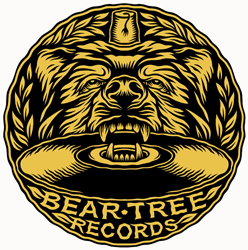1
/
of
1
Conrad Schnitzler 'Blau' LP
Conrad Schnitzler 'Blau' LP
Regular price
£27.49 GBP
Regular price
Sale price
£27.49 GBP
Unit price
/
per
Tax included.
Couldn't load pickup availability
Blue vinyl.
Conrad Schnitzler (1937–2011), composer and concept artist, is one of the most important representatives of Germany’s electronic music avant-garde. A student of Beuys and Stockhausen, he founded Berlin’s legendary Zodiak Free Arts Lab, a subculture club, in 1967/68, was a member of Tangerine Dream (together with Klaus Schulze and Edgar Froese) and Kluster (with Dieter Moebius and Hans-Joachim Roedelius) and also released countless solo albums. - The blue album from 1974 and was Schnitzler’s second solo LP. On the red album, Conrad Schnitzler laid down the direction his musical artistry would take. The blue album (“Blau”) offered confirmation of his intent. Maybe the “Rot” and “Blau” tracks were recorded in the same session. Structure, sound and timbre of both LPs are so similar as to suggest that this was the case (an unverified assumption nevertheless!). Far more important than this historical pedantry is the fact that Schnitzler included two brand new compositions on “Blau” which followed on seamlessly from the previous album. Quite simply, he had found his way, a course from which he would not stray as long as he lived. The so-called Berlin School (Berliner Schule) – with Conrad Schnitzler one of their number – had developed its own style of minimalist music. Clearly distinct from Anglo-American pop music, and no less removed from the minimalist art music of Steve Reich or Philip Glass, the focus here was on electronics and elementary rhythmics. The Berlin musicians showed no great interest in instrumental or vocal virtuosity, nor were they in thrall to exuberant interleaving of rhythm. With the aid of synthesizers and studio technology, they were bent on breaking into territory hitherto considered the province of a privileged elite, clouded in mystery and secrecy, resonating with uncharted sounds and noise. “Blau” is an archetypal example of this very phenomenon. Courage, the pioneering spirit and artistic brilliance can be detected in each part of the album’s two infinite sequences. Inspired by Joseph Beuys, Schnitzler propagated those very tones beyond the musical realm, detached from tradition, the only tones capable of catalyzing the utterly stagnant pop music and new music scene of the day, injecting them with fresh impulses. Questions of harmony, melody and strict form were well and truly rejected by Schnitzler. His aural crystals shine like pearls on a string. Schnitzler uses his ropes of pearls to weave new, fantastic patterns which constantly shift like kaleidoscopes to reveal unexpected facets; they are signposts to spatial and temporal infinity. Schnitzler’s style was really too idiosyncratic ever to set a precedent, but he was, and still is, one of the most significant inspirations for pop music in more recent times. Already a figure of prominence, perhaps he will one day be elevated to the status of a legend. Tracklist A1 Die Rebellen haben sich in den Bergen versteckt B1 Jupiter
Catalogue number: BB103LTD
Condition: New
Label: Bureau B


